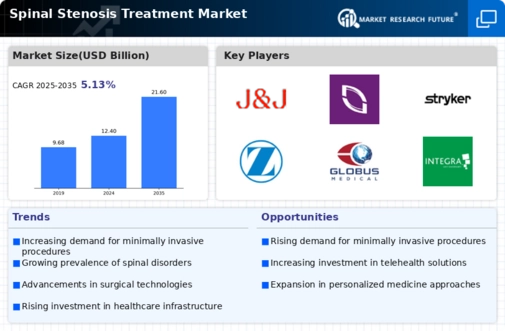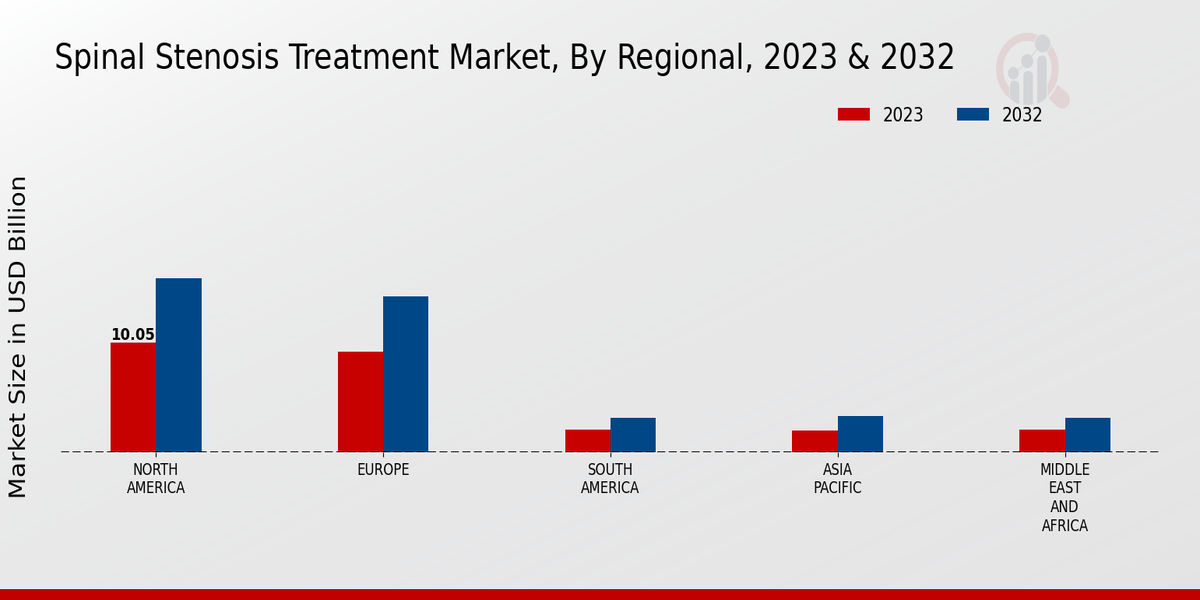Market Growth Projections
The Global Spinal Stenosis Treatment Market Industry is projected to experience robust growth over the next decade. With a compound annual growth rate (CAGR) of 5.14% anticipated from 2025 to 2035, the market is expected to expand significantly. By 2035, the market value is forecasted to reach 21.6 USD Billion, reflecting the increasing demand for effective treatment solutions. This growth trajectory is driven by various factors, including advancements in medical technology, rising healthcare expenditures, and an aging population. The market's expansion indicates a promising future for spinal stenosis treatment options globally.
Rising Healthcare Expenditure
The Global Spinal Stenosis Treatment Market Industry is benefiting from the rising healthcare expenditure observed globally. Governments and private sectors are investing more in healthcare infrastructure, leading to improved access to spinal treatment options. This trend is particularly evident in developed nations, where healthcare budgets are expanding to accommodate advanced medical technologies and treatments. As a result, patients are more likely to seek timely interventions for spinal stenosis, contributing to market growth. The increasing financial resources allocated to healthcare are expected to support the industry's expansion in the coming years.
Growing Awareness and Education
There is a notable increase in awareness and education regarding spinal health, which is positively impacting the Global Spinal Stenosis Treatment Market Industry. Public health campaigns and educational programs are informing individuals about the symptoms and risks associated with spinal stenosis, encouraging them to seek medical advice sooner. This heightened awareness leads to earlier diagnosis and treatment, which is crucial for effective management of the condition. As more individuals become informed about their spinal health, the demand for treatment options is likely to rise, further propelling market growth.
Advancements in Surgical Techniques
Technological advancements in surgical techniques are significantly influencing the Global Spinal Stenosis Treatment Market Industry. Minimally invasive procedures, such as endoscopic spine surgery, offer patients reduced recovery times and lower complication rates. These innovations not only enhance patient outcomes but also attract more individuals seeking treatment. As the industry evolves, the adoption of robotic-assisted surgeries and improved imaging technologies is likely to drive market growth. The increasing preference for these advanced surgical options indicates a shift towards more effective and patient-friendly treatments, thereby bolstering the market's expansion.
Increasing Prevalence of Spinal Disorders
The Global Spinal Stenosis Treatment Market Industry is witnessing a surge in demand due to the rising prevalence of spinal disorders, particularly among the aging population. As individuals age, the likelihood of developing spinal stenosis increases, leading to a greater need for effective treatment options. In 2024, the market is projected to reach 12.4 USD Billion, reflecting the urgent need for interventions. This trend is expected to continue, with the market potentially expanding to 21.6 USD Billion by 2035. The growing awareness of spinal health and the importance of timely treatment further contribute to the industry's growth.
Expansion of Non-Surgical Treatment Options
The Global Spinal Stenosis Treatment Market Industry is experiencing growth due to the expansion of non-surgical treatment options available for patients. Physical therapy, chiropractic care, and pain management techniques are increasingly recognized as effective alternatives to surgery. These non-invasive approaches not only provide relief but also cater to patients who may be hesitant to undergo surgical procedures. The growing acceptance of these treatments is likely to attract a broader patient demographic, thereby enhancing market potential. As the industry evolves, the integration of these options into treatment plans will likely play a crucial role in shaping the future of spinal stenosis management.









